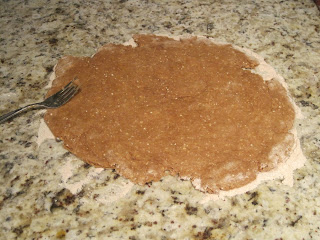I recently started a new job! One significantly closer to my chosen career path. I'm very excited about it. :)
But with change comes the inevitable blog slacking. I apologize.
As an apology, I offer TWO posts in one!
What a deal.
First up: the Ruffled Racerback.
I got the idea for this top from another awesome blog. Her refashions are simply amazing to me.
Start with a racerback tank (Mine was 3.50 from F21), a spool of grosgrain ribbon (you only need about 7 feet), and a small amount of sewing knowledge.
Take the ribbon and sew a loose stitch straight down the middle. Break it up into three segments and leave long ends to help create the ruffle.
I made a Paint drawing to explain. Lucky you.
But don't use different colors... you get it. Moving on...
The best way to do it is to insert a pin in one end of the ribbon and wrap the long thread tails you left around it to secure the threads. Then take the tail at the other end and slowly start pulling it and pushing the ribbon down and back towards the stationary pin. If you sewed it by hand, you'll only have one thread to pull. If you sewed it on a machine, you should have two threads, but you'll only pull one. If you try to pull both, nothing will happen, but when you pull just one, it will ruffle like magic.
Ruffle the whole ribbon as rufflely (is that a word?) as you'd like.
Starting at the back of the neck, pin the ribbon to the tank so that the center ribbon stitch is on the edge of the neckline. Fold the raw edge of the ribbon under twice to hide it. The sewing will keep it in place.
Pin it all the way around. Once you get to the back of the neck again, fold the raw edge under and pin it just like the first edge. If you overlap the two ends, it will never be noticable.
See all those long white threads hanging down? Those are my tails that grew longer and longer as I ruffled my ribbon. Leave them alone for now. Once the ribbon is sewn to the tank, we can snip all those off without worrying about unruffling.
Then sew the ribbon to the tank. Try to sew right over top of the original ruffling stitch so it will be hidden. Don't worry about the ruffles being perfect. That's not the point. Half of mine are smashed and I love the way it looks.
Now go back and snip off all those long tails and you've got yourself a pretty little tank.
Pin a ridiculously large flower (leftover from your high school colorguard days) to the tank and call it a day.
Next up: S'mores Turnovers!
I love s'mores. I love them so much this is my second, and surely not last, s'mores post.
They give me warm fuzzies inside. They always remind me of camp... (Shout out to my Lake Aurora readers!) ...but not for the reasons you'd think. The camp I went to didn't give out s'mores at campfire during the summer. But every fall there was a mother/daughter retreat and there were always s'mores at campfire during the retreats. The retreat was geared at younger children and their mothers and my mom and I went for about 12 years, so eventually we outgrew a lot of the planned activities. There are only so many times you can do a blindfolded trust walk... But every year we went to campfire and ate s'mores. You never outgrow campfires or s'mores.
I'm gonna slack off a LOT here and just redirect you to the actual recipe from Recipegirl.com, but to prove I made them, I'll add a picture.
Peanut Butter S'mores Turnovers
I made that, I promise. How great does it look? So delicious. So simple. Go make them. Right now.


























